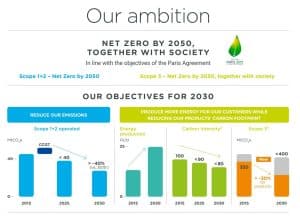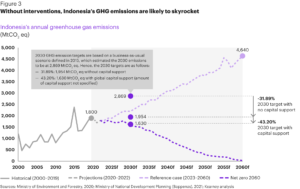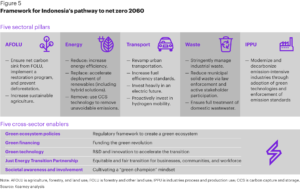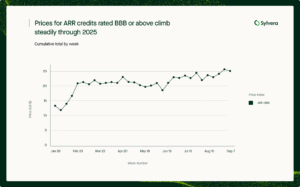German climate-tech company Novocarbo has raised €25 million ($27M) in growth funding to establish a pan-European infrastructure network for its net zero solution. Partnering with a French investor, Novocarbo aims to launch Carbon Removal Parks across Europe to drive decarbonization.
SWEN Capital Partners, a prominent European infrastructure firm, is backing Novocarbo’s mission to remove 1 million tonnes of CO2 by 2030. Novocarbo’s funding milestone represents one of the largest CDR investments in Europe in recent years.
With support from SWEN Capital Partners’ SWEN Impact Fund for Transition 2, Novocarbo plans to expand its Carbon Removal Parks network across the continent.
Novocarbo’s Carbon Removal Parks: A Pan-European Climate Solution
Novocarbo specializes in constructing and operating Carbon Removal Parks, integrating multiple climate actions:
- Extracting CO2 from the atmosphere,
- Generating renewable energy, and
- Producing biochar, a sustainable carbon material.
Through Biochar Carbon Removal (BCR) technology, these parks produce climate-neutral heat. This biomass-produced heat offers a pathway for companies and municipalities to decarbonize their energy supply.
What is BCR?
BCR is a carbon removal method that uses carbon stored in biomass, obtained through photosynthesis, to extract carbon from the atmosphere.
Biomass, which comprises organic residues, undergoes a high-temperature heating process in the absence of oxygen, known as pyrolysis. During this conversion, the organic compounds in the biomass are thermally decomposed, with volatile components transitioning into the gas phase.

The residual carbon is left in the form of biochar, a solid substance that is easily storable. This process can produce a range of products, including biochar and renewable energy.
Novocarbo’s Carbon Removal Parks, which combine CO2 removal with green heat generation, play a dual role in achieving net-zero emissions. Since its establishment in 2017, the Hamburg-based startup has launched three Carbon Removal Parks in Germany and expanded its team to over 35 employees.

Novocarbo boasts one of Europe’s largest distribution networks for biochar soil conditioners and has attracted corporate clients like Bayer and Swiss Re through its pioneering carbon projects and carbon removal credit trading.
Recently, Novocarbo secured 3 long-term carbon credit agreements totaling over 8,000 tonnes of CO2.
With the new funding, the company will expand its BCR solution further, offering a vital means of mitigating climate change. It will enable the company to scale up to 200 parks by 2033, bolstering Europe’s CDR and green heating infrastructure.
Advancing CDR as a Net Zero Solution
With SWEN CP onboard, Novocarbo gains a strategic partner to establish impactful net zero infrastructure across Europe. SWEN CP is known for its mission-driven investment approach focused on addressing environmental challenges.
As an impact fund with a clear sustainability objective, SWEN CP seeks to accelerate the transition to renewable energies and now, by investing in Novocarbo, aims to incorporate carbon removal solutions into its portfolio for the first time.
While reducing greenhouse gas (GHG) emissions remains crucial in combating climate change, the Intergovernmental Panel on Climate Change (IPCC) emphasizes that deploying CDR is essential to offsetting hard-to-abate emissions and achieving net zero emissions. The recent approval of the EU Carbon Removal Certification Framework (CRCF) underscores the importance of scaling CDR technologies to meet climate targets.
Biochar is a rapidly growing carbon removal sector, attracting significant investments and purchases from large companies. In 2023, it accounts for more than 90% of all CDR deliveries.
Last year, a Canadian biochar company secured $38 million in a Series B round to expand its production. Days ago, Shell agreed to buy biochar removal credits from a Mexico-based biochar producer.
Caspar von Ziegner, CEO Novocarbo, highlighted the role of biochar removal in mitigating climate change, saying that:
“Our only chance to limit global warming to 1.5 degrees is by unlocking the full potential of impactful net zero technologies like Biochar Carbon Removal… to bring hard-to-abate industries onto the much-needed net-zero path. Right here, right now, because the climate can’t wait.”
Novocarbo’s $27 million funding milestone speaks of a significant step in Europe’s climate mitigation efforts. Its Carbon Removal Parks, powered by BCR technology, could lead the charge in combatting climate change and achieving net zero.
The post Novocarbo Secures $27M for Carbon Removal Parks appeared first on Carbon Credits.
Carbon Footprint
Oil Giants Under Fire: ExxonMobil Fights Climate Laws as TotalEnergies Found Guilty of Greenwashing
Two of the world’s largest oil companies, ExxonMobil and TotalEnergies, are in the spotlight for very different reasons. Exxon is fighting new climate-reporting laws in California. Meanwhile, TotalEnergies was found guilty of greenwashing or misleading the public about its climate claims. These changes show the rising tension among fossil fuel producers, governments, and regulators as climate rules get stricter around the world.
ExxonMobil Takes California to Court Over Climate Rules
ExxonMobil filed a lawsuit to block California’s new climate-reporting requirements. The company claims the laws breach its constitutional rights, particularly its First Amendment free speech rights. It also says they unfairly target large businesses in the state.
The case focuses on two key laws:
- Senate Bill 253 requires companies that make over $1 billion a year to report their greenhouse gas emissions. This includes indirect “Scope 3” emissions.
- Senate Bill 261 requires companies to share how climate risks might impact their finances and operations.
Exxon says the laws force companies to “speak” in a way that aligns with California’s view on climate change. The oil giant says the regulations will bring high costs and unreliable data. Also, tracking emissions in global supply chains is tricky.
California officials, however, say the lawsuit is an attempt to avoid transparency. They argue that companies must be open about the full impact of their activities if the world is to meet climate goals.
If the court sides with Exxon, the decision could delay the rollout of similar laws in other U.S. states. But if California wins, it would mark one of the most ambitious climate-reporting mandates in the world.
TotalEnergies Faces Penalty for Misleading Climate Claims
In France, TotalEnergies faced a very different kind of scrutiny. A Paris court decided on October 23 that the company misled consumers with its public statements about climate goals.
The court decided that TotalEnergies’ 2021 marketing messages were misleading under its greenwashing laws. They claimed to be “a major actor in the energy transition” and aimed for net zero by 2050. However, the court noted the company’s ongoing investment in oil and gas projects.

As a result, TotalEnergies must remove or revise the disputed statements from its website within one month or face daily fines of up to €20,000. The company was also ordered to pay damages and legal fees to three environmental groups that filed the lawsuit.
TotalEnergies accepted the ruling. However, it noted that most claims by the plaintiffs were dismissed. The company also insisted that its low-carbon investments are real.
The TotalEnergies case marks one of the first successful “greenwashing” rulings in Europe against a major fossil fuel producer. It sends a clear message: companies must align their advertising with measurable action, not just promises.
A Global Shift Toward Accountability
The twin cases reveal a major shift in how governments and courts are handling corporate climate claims. Oil and gas companies have pushed for long-term net-zero goals for years. Yet, they keep expanding fossil fuel production. That approach is now under heavy scrutiny.
Across the world, regulators are moving from voluntary to mandatory climate reporting. Investors and consumers are also demanding more proof that companies are reducing emissions in real terms, not just on paper.
The International Energy Agency (IEA) reports that the global oil and gas industry accounts for about 15% of total energy-related emissions. This includes methane leaks and refining. The IEA says these emissions must fall by at least 60% by 2030 to stay on track for net-zero goals.
But progress remains slow. In 2024, the biggest oil companies put over $400 billion into new fossil fuel projects. In contrast, they invested less than $80 billion in renewables. This imbalance fuels criticism that public climate statements often do not match actual spending.

Why Climate Disclosure Laws Are Game-Changers
Transparent emissions reporting is a critical step toward accountability. California laws in Exxon’s lawsuit require big companies to report their total emissions. This includes emissions from direct operations, supply chains, and product use.
Supporters say these rules will:
- Create a level playing field for all large firms.
- Help investors and consumers compare climate performance.
- Push companies to reduce emissions more aggressively.
For example, Scope 3 emissions, those from customers using a company’s products, often make up more than 80% of an oil company’s carbon footprint. Without such disclosures, the true impact of fossil fuels remains hidden.
Opponents, however, say the costs and technical challenges could be high. They warn that requiring thousands of global companies to track every step of their carbon footprint could lead to inconsistent or unverifiable results.
Still, many analysts believe the trend toward mandatory disclosure is irreversible. Similar frameworks are being considered in the European Union, Japan, and Canada.
Rising Legal and Market Risks for Oil Majors
The cases involving ExxonMobil and TotalEnergies are part of a growing wave of climate-related lawsuits. The Grantham Research Institute reports that almost 3,000 climate cases have been filed globally. About 230 of these focus directly on companies.
Many involve accusations of greenwashing, misleading investors, or failing to disclose climate-related financial risks.
The potential costs are high. Penalties, legal fees, and damaged reputation can all hurt a company’s market value. For investors, it adds a new layer of risk in an already volatile energy sector.
Meanwhile, clean energy investment continues to rise. BloombergNEF estimates that in 2024, spending reached over $2 trillion. This includes renewable energy, electric vehicles, and carbon capture technology. This is more than double what was invested in fossil fuels.
This global capital shift pressures oil companies. They need to show they are adapting to the energy transition, not resisting it.
The Bigger Picture: Transition or Tension?
These two high-profile cases capture a crossroads moment for the oil industry. Governments aim for quicker decarbonization. However, companies still depend on fossil fuels for profit.
ExxonMobil’s lawsuit represents resistance — a pushback against state regulation. TotalEnergies’ court case shows what happens when public messaging gets ahead of actual progress.
Yet, both cases show that climate accountability is no longer optional. The industry is under pressure to show clear results. This comes from courts, disclosure laws, and investors.
To stay competitive, oil majors must boost low-carbon investments. They should also improve transparency and align operations with credible climate targets.
If Exxon loses its challenge, it could open the door to a wave of state and federal disclosure rules in the U.S. If more courts follow France’s lead, companies could face lawsuits for greenwashing worldwide.
Either way, fossil fuel companies are under pressure to back their climate claims with action. The age of unchecked promises is ending, replaced by a future of measured accountability.
- READ MORE: How Princeton’s Break with BP Exposed the Hidden Influence of Fossil Fuel Money on Universities
The post Oil Giants Under Fire: ExxonMobil Fights Climate Laws as TotalEnergies Found Guilty of Greenwashing appeared first on Carbon Credits.
Carbon Footprint
Beyond Meat’s Comeback: 600% BYND Stock Surge Fuels Its Climate Revival
Beyond Meat is back in the spotlight. The plant-based meat company has seen a sharp rise in its share price after announcing a major U.S. retail expansion. It revealed that its products would now be sold in more than 2,000 Walmart stores. The company also launched a new Beyond Burger 6-Pack, giving shoppers a more affordable way to buy plant-based meat.
But this comeback is about more than business. Beyond Meat’s biggest story lies in its climate and sustainability record, which continues to set it apart from traditional meat producers.
A Massive Stock Rebound

Beyond Meat’s stock surge surprised both analysts and investors. The sharp jump came after months of slow trading and declining confidence in plant-based food stocks.
Over a three-day trading period, Beyond Meat experienced a remarkable surge of nearly 600%, with its share price increasing from $0.52 on October 16 to a peak of $3.62 on October 21. By October 27, the stock had settled at $1.81, reflecting ongoing volatility and heightened market interest.
Analysts say the rally reflects renewed trust in Beyond Meat’s growth strategy, especially its partnership with Walmart and the introduction of lower-priced products. The move shows how the company plans to reach more households and expand in a challenging grocery market.
Market data show Beyond Meat’s market capitalization climbed by billions of dollars in less than a week. The rally also sparked fresh interest from institutional investors looking at sustainability-driven food companies.
Even after the rapid rise, analysts note that Beyond Meat remains a volatile stock. Still, its recovery highlights how strong sustainability credentials and affordable innovation can reignite investor enthusiasm.
Huge Reductions in Emissions and Resource Use
Beyond Meat’s latest life cycle assessments (LCAs) show how much cleaner its products are compared to beef.
- Making a Beyond Burger creates 90% fewer greenhouse gas emissions than a beef burger of the same size.
- It uses 97% less water, 93–97% less land, and up to 65% less energy.
- One Beyond Burger has a carbon footprint of 0.68 kilograms of CO₂e, about 38 times smaller than beef.

These results come from studies done by the University of Michigan and reviewed by independent experts. The reason for the low impact is simple.
Beyond Meat’s ingredients — such as peas, rice, and canola — take far fewer resources to grow than raising cattle. Cows also release methane, a gas far more powerful than CO₂, which plants do not produce.
Steak Without the Guilt: Cutting Emissions by 84%
Beyond Meat’s new Beyond Steak also shows strong environmental performance. The product emits 84% less greenhouse gas and uses 93% less water than a beef steak.
The company says if every American swapped one beef meal a week for a Beyond Meat product, it could cut emissions equal to taking 12 million cars off the road each year.

Food production creates about 1/3 of global greenhouse gas emissions, according to the United Nations. Plant-based meat helps lower that total, making a diet change one of the fastest ways to fight climate change.
Below is the chart showing the carbon footprint of different food products per kilogram:

How Beyond Meat Builds Its ESG Strategy
Beyond Meat’s commitment to sustainability goes beyond its products. The company’s ESG plan focuses on clean operations, better packaging, and responsible sourcing.
- Renewable power: Some of its factories already run on clean electricity. The company plans to expand this each year.
- Sustainable sourcing: Ingredients come from farms that use less water and fewer fertilizers.
- Greener packaging: Beyond Meat has reduced plastic use and added more recyclable materials.
- Water savings: Compared to beef, its products need only a small fraction of the water to produce.
In its latest ESG report, Beyond Meat said it had cut its operational carbon footprint by over 20% in just two years. Its total GHG emissions reached about 193,700 metric tons of CO₂e across all scopes. This includes 7,999 tCO₂e from Scope 1, 9,065 tCO₂e from Scope 2 (market-based), and 176,654 tCO₂e from Scope 3 activities such as purchased goods and services.

Helping Global Climate Goals
Beyond Meat’s model supports the Paris Agreement’s goal to limit global warming to 1.5°C. Livestock farming creates nearly 15% of global emissions, mostly from methane. Replacing even part of the global meat market with alternatives would have a big impact.
Analysts at Boston Consulting Group (BCG) estimate that if 10% of all meat sold by 2030 were plant-based, it could cut 0.5 gigatons of CO₂e each year.
By expanding through Walmart, Target, and other retailers, Beyond Meat is helping make climate-friendly food more common and affordable.
Business Growth and Climate Impact
Beyond Meat’s recent recovery also matches a growing global market for sustainable food. Plant-based food sales hit $52 billion in 2024 and could reach over $160 billion by 2030, according to Bloomberg Intelligence.

Investors are increasingly focused on ESG performance. Beyond Meat’s verified environmental data makes it attractive for both climate-conscious investors and everyday consumers.
The company’s new six-pack burger is a big part of that effort. It offers lower prices during a time when food inflation is high, helping more people choose climate-friendly protein without paying extra.
Setting Standards in Sustainability Reporting
Beyond Meat stands out for being open about its environmental data. It reports its progress through international standards like the Sustainability Accounting Standards Board (SASB) and the Carbon Disclosure Project (CDP).
In 2024, it ranked among the top 5% of food companies worldwide for sustainability transparency, according to Corporate Knights. The company also works with industry groups and governments to improve standards for labeling and emissions reporting.
Beyond Meat’s supply chain data show how its focus on transparency helps build trust with retailers and regulators. Investors view this as a sign of long-term stability and accountability.
New Challenges, Same Mission
Beyond Meat’s journey has not been easy. The plant-based meat market is becoming more competitive, and consumer demand has been uneven in recent years. Some shoppers still prefer the taste or texture of beef.
To respond, Beyond Meat is improving its recipes and investing in research. It is also testing regenerative farming methods to grow its crops in ways that store carbon and improve soil health. These efforts could make its ingredients even more climate-friendly.
Price remains another challenge. Plant-based meat often costs more than beef. However, the new value-sized burger pack and wider retail reach aim to close that gap and attract new buyers.
Beyond Meat’s stock surge marks more than a financial rebound; it signals renewed faith in sustainable food innovation. As global emissions rise, Beyond Meat shows how small choices, like swapping one meal, can add up to real change.
Every Beyond Burger or Beyond Steak sold saves water, reduces land use, and lowers carbon pollution. The company proves that business growth and sustainability can go hand in hand and that the future of food can be both profitable and planet-friendly.
The post Beyond Meat’s Comeback: 600% BYND Stock Surge Fuels Its Climate Revival appeared first on Carbon Credits.
Carbon Footprint
Indonesia Aims to Sell 13.4 Billion Tonnes of Carbon Credits to Global Buyers
Indonesia plans to sell 13.4 billion tonnes of carbon-dioxide equivalent (CO₂e) credits to global buyers. This is one of the biggest carbon market plans in the world. The government says the move could bring in billions of dollars in investment while helping the country meet its climate goals.
The forestry minister’s announcement comes as more countries and companies look to buy verified carbon credits to offset emissions. Experts estimate the global carbon market could grow to $35 billion by 2030, more than five times its current size. With its large forests and renewable energy projects, Indonesia could become a major supplier of these credits.
Building a Global Carbon Market
The 13.4 billion tonnes of CO₂e credits will come from projects that cut or remove carbon emissions. These include forest protection, peatland restoration, renewable energy, and carbon capture programs.
Indonesia has about 125 million hectares of tropical forest, which absorbs over 25 billion tonnes of CO₂e every year. The government sees carbon trading as a way to earn money while protecting the environment.
Officials say this plan could create tens of thousands of green jobs. It will also attract private funding for conservation and clean energy projects.
The credits will be traded through Indonesia’s national carbon registry, the Sistem Registri Nasional (SRN). This system tracks emissions and removals across industries and projects.
The Rise of Carbon Trading at Home
Indonesia launched its own carbon exchange in 2023 through the Indonesia Stock Exchange (IDX). During its first year, it traded about 500,000 tonnes of CO₂e, worth around $5 million.
By 2024, the country had registered more than 2,000 carbon projects, covering areas like energy, forestry, and manufacturing. The government also started a carbon-pricing system for power plants. Large emitters must now report their emissions and offset some of them through credits.
In 2025, Indonesia reopened carbon trading with other countries under new rules aligned with the Paris Agreement. These rules prevent double-counting of emission cuts and make trading more transparent.
However, local carbon prices remain lower than international ones. Indonesia’s credits often sell for under $20 per tonne, while high-quality global credits range from $40 to $80 per tonne. Officials hope international demand will help raise prices closer to global levels.
- SEE MORE: $65 Billion Green Fund from Carbon Credits Sale? Says Indonesia’s President-elect Prabowo Subianto
The Economic and Climate Impact
If Indonesia sells all 13.4 billion tonnes of credits, they could be worth between $130 billion and $670 billion, depending on the market price. Even selling a fraction of this amount would make Indonesia one of the world’s biggest carbon credit exporters.
The program supports the country’s pledge to cut emissions by almost 32% on its own or 43% with global support by 2030. Indonesia also aims to reach net-zero emissions by 2060.

Moreover, the country aims to cut emissions by up to 43% by 2030 with international support. Indonesia’s forests and peatlands store large amounts of carbon; protecting them and trading carbon credits can turn this natural resource into income.
At the same time, the country still burns coal for much of its power, so these credits help raise funds for cleaner energy. Revenue from carbon credit sales will support:
- Forest protection: Deforestation, which once exceeded 1 million hectares per year, has already declined and could fall further.
- Renewable energy projects: Solar, hydro, and geothermal sources now supply about 14% of Indonesia’s power.
- Local communities: Landowners who protect forests and wetlands will earn income instead of clearing them for crops.
These projects link environmental goals with economic growth. They help rural areas gain from the green economy. The Southeast Asian nation has the following pillars in cutting emissions.

Big Buyers, Bigger Ambitions
Many large companies are eager to buy reliable carbon credits. Firms like Microsoft, Shell, and Delta Air Lines have pledged to offset emissions through verified carbon projects.
According to BloombergNEF, demand for nature-based credits could rise from 165 million tonnes in 2024 to over 1 billion tonnes by 2030. If Indonesia supplies even 10% of that, it could sell 100 million tonnes each year and earn around $5 billion annually at moderate prices.
Indonesia’s participation will also help balance global supply, which currently depends mostly on Latin America and Africa. A more diverse carbon market could make prices fairer and more stable worldwide.
Per Sylvera’s report, nature-based credits (ARR) price hit a record high in late 2025. The report shows that buyers are looking for projects that have a verified impact and deliver real results.

Challenges and Verification
Indonesia’s plan faces some key challenges. Experts warn that buyers need strong proof that credits represent real, lasting carbon reductions.
The government is working with certification bodies such as Verra and Gold Standard to verify projects and meet international standards. It will also use digital systems to track every project and transaction.
Some environmental groups worry about “reversal risk.” This happens when forest-based carbon savings are lost later through fires or illegal logging. To prevent this, Indonesia plans to set up a buffer system — keeping some credits in reserve in case of future losses.
The country will also use “corresponding adjustment” rules to ensure every exported credit is subtracted from Indonesia’s national inventory. This keeps its reporting aligned with global accounting standards.
Asia’s Race for Carbon Leadership
The International Energy Agency (IEA) says the world needs to remove or offset 5 to 10 billion tonnes of CO₂ each year by 2050 to meet climate targets. At present, global carbon markets cover less than 1% of that need.
Countries like Indonesia can help fill this gap. The World Bank estimates Southeast Asia could earn $10 billion a year from carbon trading by 2030 if systems are transparent and credible.
Countries like Vietnam and Malaysia are also creating carbon registries. They might open their markets to foreign buyers soon.
Carbon credit exports could make Indonesia a leader in the global green economy. The country could use this income to fund renewable energy, restore ecosystems, and support local livelihoods.

Under government rules, at least 30% of carbon credit revenue must go to local communities and regional governments. This helps support reforestation, sustainable farming, and eco-tourism.
If the plan works, experts say Indonesia could cut up to 2 billion tonnes of CO₂e by 2030. That’s like taking 400 million cars off the road for a whole year.
Promise and Proof: Making Every Credit Count
Indonesia’s offer to sell 13.4 billion carbon credits shows how climate policy and economic growth can work together. The opportunity is huge, but success will depend on strong verification, fair pricing, and transparent reporting.
If done right, the plan could turn Indonesia into one of the top players in the global carbon market. It could also help meet global climate goals while bringing new income to rural areas.
As more nations look for trustworthy carbon credits, Indonesia’s forests and renewables could become valuable global assets. The challenge now is to make sure every credit sold represents real, lasting progress for the planet.
The post Indonesia Aims to Sell 13.4 Billion Tonnes of Carbon Credits to Global Buyers appeared first on Carbon Credits.
-
Climate Change2 years ago
Spanish-language misinformation on renewable energy spreads online, report shows
-
Climate Change3 months ago
Guest post: Why China is still building new coal – and when it might stop
-
Climate Change Videos2 years ago
The toxic gas flares fuelling Nigeria’s climate change – BBC News
-

 Greenhouse Gases1 year ago
Greenhouse Gases1 year ago嘉宾来稿:满足中国增长的用电需求 光伏加储能“比新建煤电更实惠”
-
Greenhouse Gases3 months ago
Guest post: Why China is still building new coal – and when it might stop
-

 Climate Change1 year ago
Climate Change1 year ago嘉宾来稿:满足中国增长的用电需求 光伏加储能“比新建煤电更实惠”
-

 Carbon Footprint2 years ago
Carbon Footprint2 years agoUS SEC’s Climate Disclosure Rules Spur Renewed Interest in Carbon Credits
-
Renewable Energy4 months ago
US Grid Strain, Possible Allete Sale





